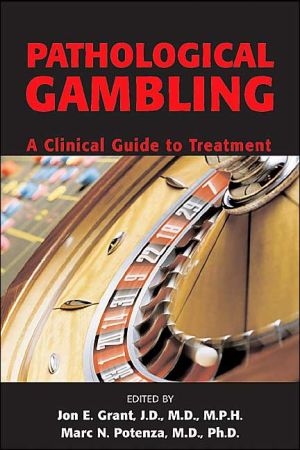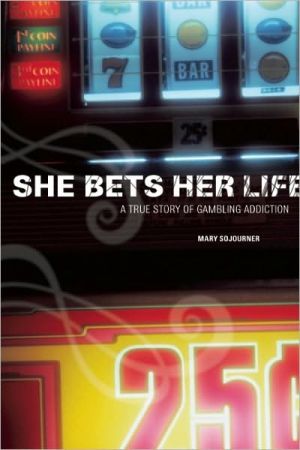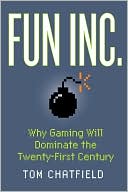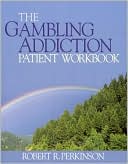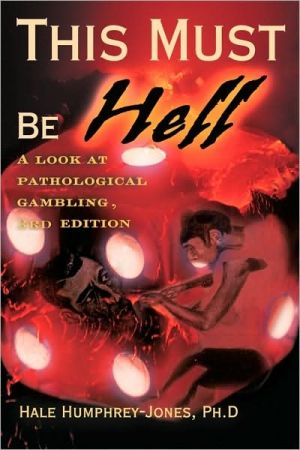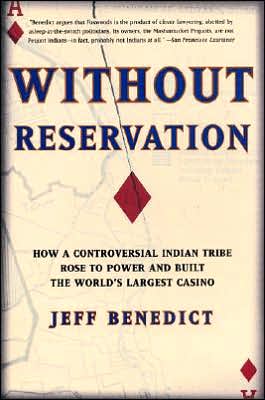Pathological Gambling: A Clinical Guide to Treatment
In the past five years, dramatic advances in research on pathological gambling have led to an array of treatment options that can substantially improve the lives of patients with this disabling illness.\ Eloquently attesting to this extraordinary progress, this remarkable clinician's guide comprises the most extensive coverage on public health, clinical characteristics and treatment, psychotherapy and psychopharmacology, and interventions for adolescents, adults, and older adults.\ Written by...
Search in google:
The past five years have witnessed dramatic advances in research on pathological gambling—a diagnosis often overlooked by clinicians who are unaware not only of the personal and social consequences of pathological gambling, but also of the possible treatment options. Today, clinicians can choose from an array of treatment options to substantially improve the lives of patients with this disabling illness.Eloquently attesting to this extraordinary progress, this remarkable clinician's guide comprises the most extensive coverage on public health, clinical characteristics and treatment, psychotherapy and psychopharmacology, and interventions for adolescents, adults, and older adults. Written by the world's leading researchers on psychiatric aspects of gambling, this truly comprehensive volume discusses how to diagnose pathological gambling and provides the tools to do so. Here, 32 experts detail the clinical phenomenology, etiology, and treatment of pathological gambling, highlighting the current clinical approaches most likely to lead to early identification, symptom remission, and improvement maintenance.Useful appendixes provide specific tests, scales, and diagnostic criteria following four major sections of the book: • Public Health and Epidemiology discusses prevalence and definitions of recreational, problem, and pathological gambling; the relationship between the different levels of gambling severity; and gambling's effects on societal, familial, and individual health and well-being.• Clinical Characteristics covers the symptoms and sequelae of pathological gambling and the differences among adolescents, older adults, and men and women, and shows that pathological gambling—rather than being categorized as a single disorder—shares important features with many disorders, among them obsessive-compulsive spectrum disorders, affective spectrum disorders, addiction, and impulse-control disorder.• Etiology details the realms of both psychology (behavioral, cognitive, and dispositional theories) and neurobiology (noradrenergic, serotonergic, dopaminergic, and opioidergic systems as well as familial and inherited factors) to explain the behavior of pathological gambling—knowledge that may prove useful in understanding a range of addictive and impulsive disorders.• Prevention and Treatment emphasizes the vital role of the clinician in prevention efforts, including a prevention strategy tailored specifically for adolescents and young adults; discusses a variety of behavioral and pharmacological interventions for patients including self-help and professional-based interventions for family members; and concludes with assessments useful in diagnosing pathological gambling and monitoring symptom change. Psychiatrists, psychiatric researchers, and other mental health care professionals will welcome this book as their most up-to-date source for invaluable knowledge about and research from the world's recognized experts on pathological gambling. Doody Review Services Reviewer:Brett C. Plyler, M.D.(Northwestern Memorial Hospital)Description:This book examines pathological gambling and its epidemiology, clinical presentation, prevention, and treatment.Purpose:The primary purpose is to document the clinical phenomenology, etiology, and treatment of pathological gambling.Audience:The book is written for practicing clinicians.Features:This book examines the epidemiology, etiology, treatment, and consequences of pathological gambling. It discusses issues such as behavioral and biological bases for gambling as well as medication and therapeutic treatments. The book also reviews available screening instruments as well as providing samples of some. Further, it has a section on the high risk population of adolescents and young adults.Assessment:This is a well written and thorough examination of pathological gambling. I initially only had a passing familiarity with gambling problems but this book has greatly increased both my knowledge and comfort level in addressing and treating this problem in my patients. It has a good review of both therapy and medication treatment avenues as well as tests to follow the efficacy of each. The index provides a number of references for more advanced reading, but this book provides an excellent starting point for practicing clinicians who want to become more knowledgeable about pathological gambling issues.
IntroductionCh. 1Gambling and the public health3Ch. 2Epidemiology25Ch. 3Clinical characteristics39Ch. 4Categorization55Ch. 5Adolescents and young adults69Ch. 6Older adults83Ch. 7Gender differences97Ch. 8Behavioral understanding113Ch. 9Biological basis for pathological gambling127Ch. 10Prevention efforts and the role of the clinician145Ch. 11Prevention and treatment of adolescent problem and pathological gambling159Ch. 12Cognitive and behavioral treatments169Ch. 13Pharmacological treatments189Ch. 14Screening and assessment instruments207App. ADSM-IV-TR criteria for pathological gambling233App. BEarly Intervention Gambling Health Test (EIGHT)237App. CGambling Symptom Assessment Scale (G-SAS)241App. DSouth Oaks Gambling Screen (SOGS)247App. EYale-Brown Obsessive-Compulsive Scale modified for Pathological Gambling (PG-YBOCS)253
\ Timothy FongPathological Gambling: A Clinical Guide to Treatment is a well written and conceptually engaging book. Regardless of the reader's familiarity with pathological gambling, the book provides concise chapters that summarize the most recent research findings into clinically relevant messages... [I]t is up-to-date, is organized well, and serves as a fundamental starting point for the treatment of pathological gamblers.\ \ \ \ \ \ Alex BlaszczynskiThis book is an excellent resource that is highly recommended for clinicians and undergraduate students wishing to gain an overview of the field of pathological gambling. There is a wealth of useful statistics and the strengths and weaknesses of what is known about the aetiology and clinical treatment of pathological gambling articulated clearly.\ \ \ \ From The CriticsReviewer: Brett C. Plyler, M.D.(Northwestern Memorial Hospital)\ Description: This book examines pathological gambling and its epidemiology, clinical presentation, prevention, and treatment.\ Purpose: The primary purpose is to document the clinical phenomenology, etiology, and treatment of pathological gambling.\ Audience: The book is written for practicing clinicians.\ Features: This book examines the epidemiology, etiology, treatment, and consequences of pathological gambling. It discusses issues such as behavioral and biological bases for gambling as well as medication and therapeutic treatments. The book also reviews available screening instruments as well as providing samples of some. Further, it has a section on the high risk population of adolescents and young adults.\ Assessment: This is a well written and thorough examination of pathological gambling. I initially only had a passing familiarity with gambling problems but this book has greatly increased both my knowledge and comfort level in addressing and treating this problem in my patients. It has a good review of both therapy and medication treatment avenues as well as tests to follow the efficacy of each. The index provides a number of references for more advanced reading, but this book provides an excellent starting point for practicing clinicians who want to become more knowledgeable about pathological gambling issues.\ \ \ \ \ 4 Stars! from Doody\ \
